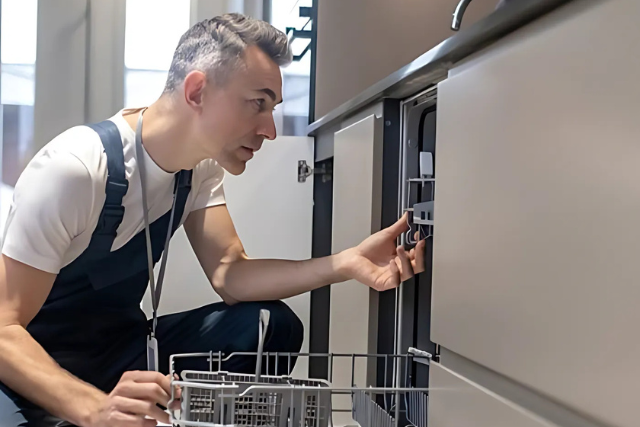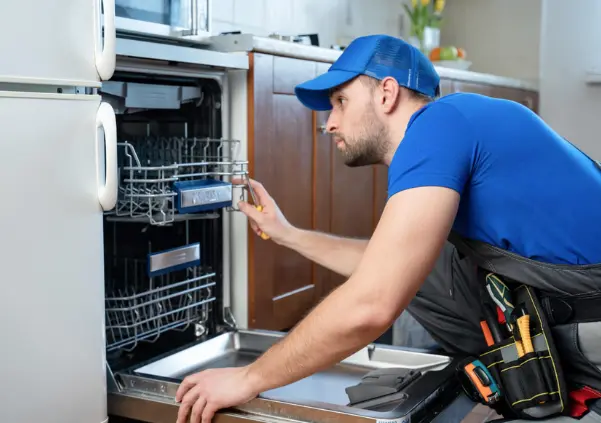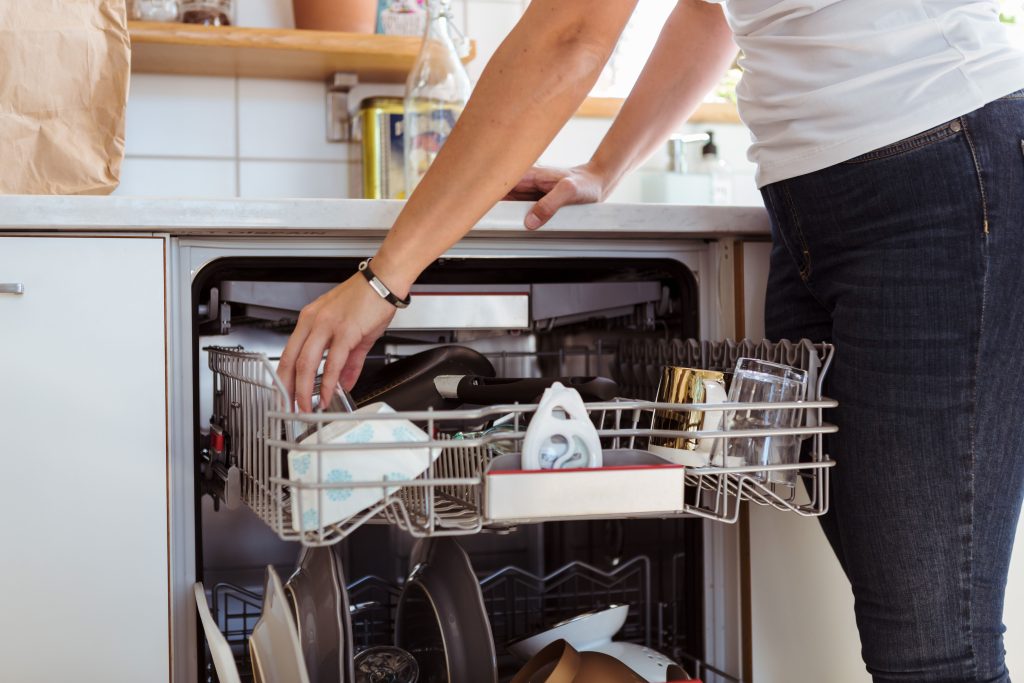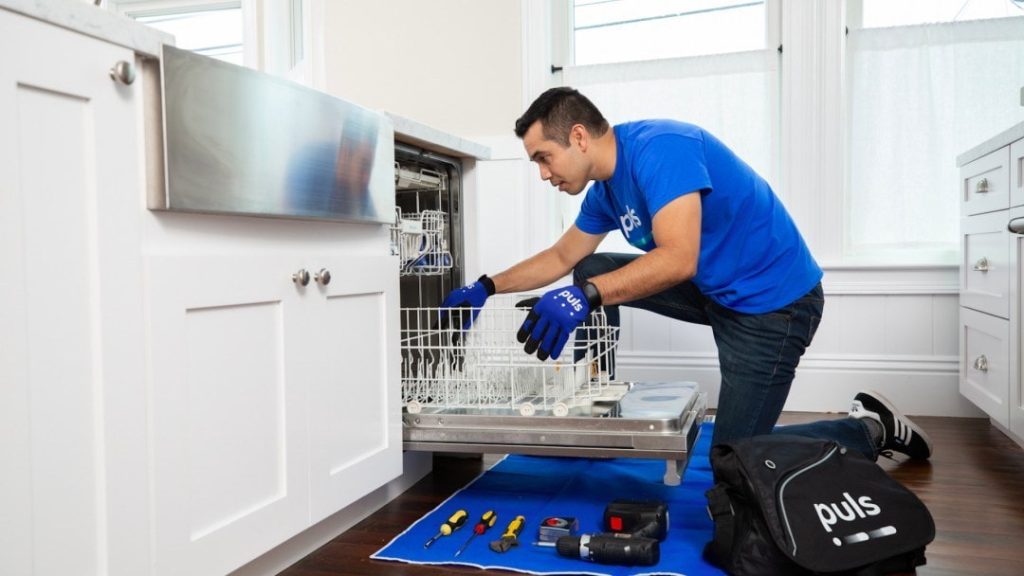Why Your Dishwasher Is not Draining & How to Fix It

A dishwasher that won’t drain can disrupt even the smoothest daily routine—leaving standing water, half-cleaned dishes, and lingering frustrations. Whether you notice puddle of water at the bottom or your dishes emerging soaked in dirty water, quick and accurate action is crucial. In this blog, we’ll address why your dishwasher isn’t draining and offer practical ways to fix it—from checking the drain hose to verifying proper detergent use. By diagnosing potential culprits early and performing timely fixes, you’ll keep your kitchen running smoothly, protect your dishwasher’s life, and avoid costly repairs.

Understand the Drainage Mechanism of Your Dishwasher
Modern dishwashers rely on several key components to empty used water effectively, including a drain pump, spray arms, and a drain hose connecting to either a sink drain or garbage disposal. Here’s a simplified overview:
- Cycle: At certain times, the machine circulates hot water with detergent to cleanse dishes of leftover food or debris.
- Drain Phase: Toward the cycle’s end, the drain pump propels dirty water out through the dishwasher drain hose.
- Proper Flow: Clear channels, correct pressure, and unobstructed lines ensure every drop of water leaves the dishwasher tub.
When any one of these mechanisms encounters a glitch—like an obstructed drain or a failing part—excess water accumulates, sparking frustration, Unpleasant odors, or potential flooding in your kitchen.
Recognize Signs of Drainage Issues
- Standing Water: After a wash cycle, water rests at the base, indicating drainage failure.
- Unusual Noises: Gurgling or rattling sounds might point to a clog or jam within the drain hose or drain pump.
- Dirty or Soaked Dishes: If dishes remain soggy or covered in residue, something is blocking the dishwasher’s outflow path.
- Odors and Food Particles: A buildup of food scraps that can’t exit fosters mold or a musty smell over time.
Check for a Clogged Filter
Filter Function
Below the bottom rack, most dishwashers feature a dishwasher filter capturing food particles. Over multiple cycles, these bits can form a messy clog that hinders water outflow.
Fixing the Issue
- Step 1: Unplug or switch off the dishwasher’s power.
- Step 2: Remove the lower rack and locate the filter near the base.
- Step 3: Twist or lift the filter free; rinse with warm water using mild soap.
- Step 4: Scrub away sticky residue or grease with a soft brush, ensuring no holes remain blocked.
- Step 5: Reinsert the filter properly—some models require an exact twist lock.
Skipping filter maintenance can lead to unusual noises or hamper the dishwasher’s cleaning capacity, especially around the detergent dispenser area.
Inspect the Drain Hose for Kinks
Why Kinks Matter
A twisted or kinked drain hose restricts water flow from the dishwasher. This quickly manifests as partial drains, leftover soapy fluid, or a total jam if the hose is severely bent.
DIY Steps
- Gently pull the dishwasher away from the wall to see if the hose is crushed.
- Straighten any kinks or flatten the corrugated piping if possible.
- Ensure the drain hose remains elevated properly (often via a drain loop) to avert backflow from the garbage disposal or sink.
If deeper kinks persist, swapping the entire hose can be more reliable than repeated attempts at manual straightening.
Look for Blockages in the Garbage Disposal
Garbage Disposal’s Effect
Dishwashers frequently share drainage paths with a disposal. If that disposal or sink drain is obstructed, water can’t escape the dishwasher as intended. Improper disposal usage can also lead to leftover scraps lodging in the connecting lines.
Cleaning the Disposal
- Step 1: Disconnect the disposal’s power supply by turning off the breaker or removing the plug.
- Step 2: Use a flashlight to spot any jammed scraps or fibrous food lumps.
- Step 3: Clear them out with tongs or a gloved hand.
- Step 4: Restart the disposal and run warm water for a few seconds, ensuring the line is free.
If disposal blockages are too severe, or the pipe alignment is off, consider professional repair to confirm secure connections and thorough clearance.
Examine the Drain Pump Functionality
What the Pump Does
The drain pump drives leftover water from the tub to the drain hose. Malfunctions can result from motor wear, a jammed impeller, or common electrical issues. If your dishwasher stalls mid-cycle or you hear a loud hum without water draining, the pump may be failing.
When to Seek Help
A broken or jammed drain pump often requires a more advanced approach. If your dishwasher repeatedly halts at the draining phase or you notice short bursts of partial draining, consult an appliance repair expert. Attempting your own fix can worsen the damage if you’re unfamiliar with mechanical or electrical components.
Fixing the Drain Valve
Using a screwdriver to access the drain valve can be pivotal when tough food particles impede flow of water inside your built-in dishwasher. Along with removing the dishwasher drain filter and clearing out any pieces of food near the drain basket, it’s wise to run a hot water cycle and add white vinegar for a deeper cleanse.
If a Reset button appears on the control panel, pressing it after you clean filters can restore normal functioning. Ensuring the kitchen faucet and water supply remain consistent also supports proper drainage by letting the dishwasher drain pump operate without hindrance. To sustain clean dishes, follow your unit’s maintenance instructions carefully, wiping around dish racks and verifying the drain accessible line extends properly toward the kitchen sink drain. For extra clog removal, a mild drain cleaner applied in the sink region, plus occasional checks of the assembly, help preserve the machine’s longevity. By managing these simple steps, your dishwasher maintains peak efficiency without risking leaks or malfunction.
Ensure Correct Detergent Use
Why Detergent Matters
Dishwashers require specialized detergent producing minimal suds to handle grease and leftover food effectively. Substituting dish soap or random laundry detergents can create thick foam, leading to incomplete drainage.
Check for Overuse
An excess of even the correct detergent can hamper water flow. Confirm your portion lines up with manufacturer instructions, especially if your dishwasher has a smaller or larger capacity. Over-sudsing can block the drain or hamper the machine’s performance.
Assess the Air Gap Installation
Air Gap Essentials
An air gap cylinder is a small fixture placed near the sink to avert dirty water re-entering the dishwasher. If the air gap gets clogged with leftover food or soap scum, it affects the dishwasher’s ability to push water out, resulting in partial or no draining.
Cleanup
Pop off the air gap cap, clearing any visible lumps with a brush or cloth. Flush the interior with warm water to remove stubborn debris. Double-check all lines connecting to it remain secure.

Clear Debris from the Dishwasher’s Drain
Common Debris
Over weeks or months of usage, your dishwasher tub bottom can gather small chunks of food or paper from container labels. This debris may hamper normal water egress.
Quick Procedure
- Turn off the unit’s power at the breaker or unplug the cord.
- Remove the bottom rack, physically scooping out big bits and soggy items.
- Wipe the floor of the tub with a soft cloth, using gentle hot water solution if there’s greasy residue.
Preventing buildup ensures fewer blockages and better cleaning results.
Check the Sump Area for Buildup
Sump’s Role
Your dishwasher’s sump collects water before the pump evacuates it. If caked with food scraps, leftover detergent lumps, or intangible bits, drainage slows.
Clearing
Use a damp cloth, paper towel, or small tool to remove lodged debris. Soaking the area with mild, warm soapy water can loosen sticky accumulations. Ensuring a clean sump sets the stage for robust water flow during each wash cycle.
Evaluate the Dishwasher’s Cycle Settings
Selecting the Right Mode
Misaligning your dishwasher cycle with actual dish soil levels can lead to leftover water. Heavy cycles for lightly soiled loads produce extra or wasted water, while short cycles can struggle with heavily greased plates, leaving partial blockages.
Tips
- Keep an eye on mid-cycle water levels if the settings mismatch your load’s needs.
- Check if the chosen cycle inadvertently shortens draining times or fails to run the final flush.
Conduct a Water Level Test
Spotting Irregularities
Midway or 10-15 minutes into the wash, open the door slightly to see how high water stands. If levels are too high or too low, it might indicate a water inlet or draining discrepancy.
Adjust or Inspect
Try switching to a different cycle or verifying correct temperature and detergent usage. If repeated attempts yield no improvement, deeper mechanical concerns—like a failing water inlet valve or misguided float switch—may be at play.
Review the Electrical Connection to the Drain Pump
Power Source
The dishwasher’s drain pump runs on power from the machine’s central control. Loose wiring or a partially tripped breaker can hinder draining. If you suspect an electrical glitch, check your circuit breaker or the dishwasher’s plug for a snug fit.
Signs of Electrical Issues
- Flickering lights on the control panel
- Random machine shutdowns mid-cycle
- No audible attempt at draining despite a loaded tub
If you see repeated surges or no improvement after replugging, it’s possibly an internal wiring fault needing advanced diagnosis.
Investigate the Float Switch Operation
Float Switch Basics
A float switch is a small device that senses water levels inside your dishwasher. If jammed or stuck, it might signal your machine to stop filling or draining prematurely.
Troubleshooting
Gently press or lift the float to ensure it moves freely. If it’s wedged due to leftover debris, a simple cleaning with a cloth or mild detergent suffices. If the switch itself is broken, you may need an identical replacement or help from a qualified service professional.
Perform a Reset of the Dishwasher
Why a Reset Helps
Sometimes, software or microcontroller issues hamper normal draining. If your dishwasher includes a “Reset” or “Cancel” button, following your user manual’s instructions might reboot the system.
Proper Steps
Press the reset or “Cancel” button to have the machine drain any standing water. Alternatively, cut the power for a minute before plugging it back in. Testing a short rinse cycle afterward confirms if the reset resolved the glitch.
Consider Preventive Maintenance Tips
Maintaining your dishwasher keeps clogs and drain failures at bay:
- Clean your filters monthly, removing any buildup of food scraps or soap scum.
- Routinely check the drain hose alignment, ensuring no kinks or pinches hamper water movement.
- Avoid placing large amounts of leftover grease or fibrous food in the disposal or dishwasher.
- Use the correct brand or type of detergent to stop excess foaming or residue buildup.
Consistent upkeep is vital for optimal dishwasher performance, preserving day-to-day convenience.
Know When to Contact a Professional Technician
While it’s great to handle small tasks—like wiping down the dishwasher drain or cleaning out a dirty filter—some scenarios merit a professional approach:
- Persistent or repeated leaks or clogs in the drain system
- Strange or loud noises despite removing blockages
- Unresolved draining issue after verifying all standard steps
- Any sign of potential gas leaks or electrical trouble beyond your skill level
Skilled technicians can also detect hidden issues, like a failing drain motor or a short-circuited control board. This swift, specialized intervention avoids extended downtime and further damage.

How Can Toronto Refrigeration Help?
Toronto Refrigeration excels at delivering exceptional quality and reliable service for home appliances—especially dishwashers. Our licensed team tackles everything from unusual drainage blockages to advanced mechanical or electrical breakdowns. With a wide range of experience across different brands and models, we diagnose problems quickly—whether it’s a clogged line or a misaligned detergent dispenser—and provide cost-effective solutions. Our commitment to customer satisfaction ensures each repair is thorough and stands the test of time, letting you enjoy a seamlessly operating dishwasher without repeated hiccups. From addressing everyday maintenance tips to urgent fixes, we’re your go-to experts for consistent, professional results.
Conclusion
A dishwasher that refuses to drain doesn’t have to derail your busy routine. By investigating each potential cause—from a clogged drain hose or air gap cylinder to a faulty drain pump—you can usually resolve minor blockages and water backups yourself. Occasionally, complex mechanical or electrical problems demand help from professional technicians to ensure safe, long-lasting fixes. Prioritizing regular maintenance—like cleaning filters, using the right detergent, and observing correct installation—also wards off future drainage issues. Ultimately, consistent upkeep and timely intervention will keep your dishwasher running at peak performance for years.